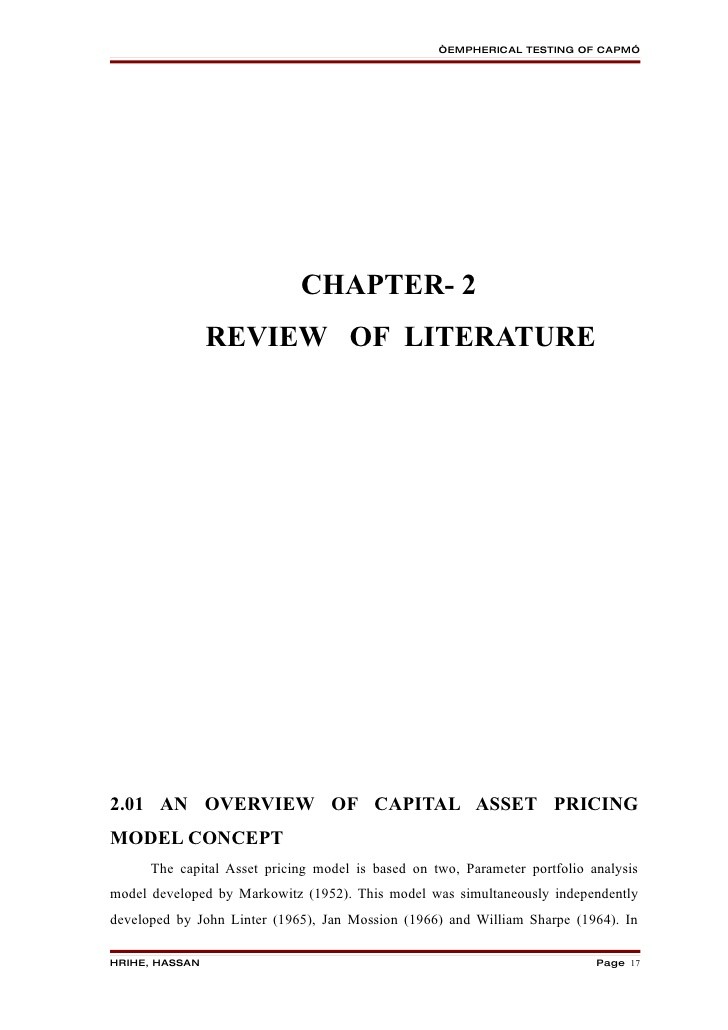A Review of Capital Asset Pricing Models
Post on: 16 Март, 2015 No Comment

Don U.A.Galagedera*
Department of Econometrics and Business Statistics
Monash University
PO Box 197 Caulfield East
Victoria 3145 Australia
Abstract
This paper provides a review of the main features of asset pricing models. The
review includes single-factor and multifactor models, extended forms of the
1. Introduction
The foundations for the development of asset pricing models were laid by Markowitz (1952)
and Tobin (1958). Early theories suggested that the risk of an individual security is the
standard deviation of its returns – a measure of return volatility. Thus, the larger the standard
Page 2
expected to select a portfolio, which is most appropriate for them, from the efficient set of
portfolios available to them.
The computation of risk reduction as proposed by Markowitz is tedious. Sharpe (1964)
developed a computationally efficient method, the single index model, where return on an
individual security is related to the return on a common index. The common index may be any
variable thought to be the dominant influence on stock returns and need not be a stock index
(Jones, 1991). The single index model can be extended to portfolios as well. This is possible
because the expected return on a portfolio is a weighted average of the expected returns on
individual securities.
When analysing the risk of an individual security, however, the individual security risk must
be considered in relation to other securities in the portfolio. In particular, the risk of an
individual security must be measured in terms of the extent to which it adds risk to the
investor’s portfolio. Thus, a security’s contribution to portfolio risk is different from the risk
of the individual security.
Investors face two kinds of risks, namely, diversifiable (unsystematic) and non-diversifiable
(systematic). Unsystematic risk is the component of the portfolio risk that can be eliminated
by increasing the portfolio size, the reason being that risks that are specific to an individual
security such as business or financial risk can be eliminated by constructing a well-diversified
portfolio. Systematic risk is associated with overall movements in the general market or
economy and therefore is often referred to as the market risk. The market risk is the
component of the total risk that cannot be eliminated through portfolio diversification.
Page 3
The CAPM developed by Sharpe (1964) and Lintner (1965), discussed in the following
section, relates the expected rate of return of an individual security to a measure of its
systematic risk. Since then, a variety of models have been developed to predict asset returns.
These are discussed in Section 3. A brief summary is given in Section 4.
2 The capital asset pricing model
The CAPM conveys the notion that securities are priced so that the expected returns will
compensate investors for the expected risks. There are two fundamental relationships: the
capital market line and the security market line. These two models are the building blocks for
deriving the CAPM. Even though they are not new, it is illustrative to discuss them here
a portfolio. This is a linear relationship between risk and return on efficient portfolios that can














